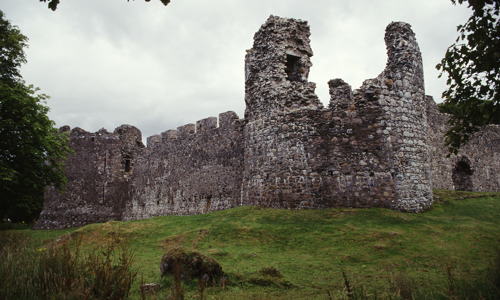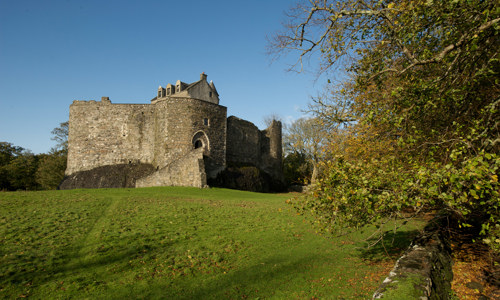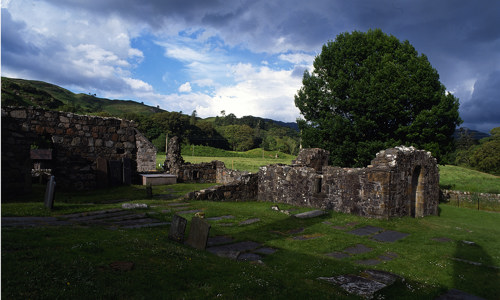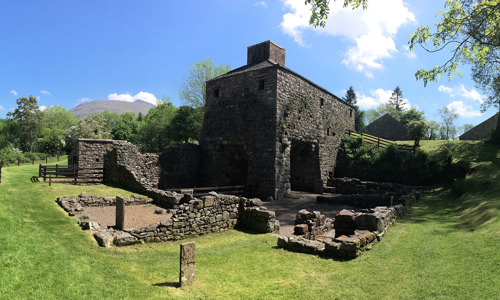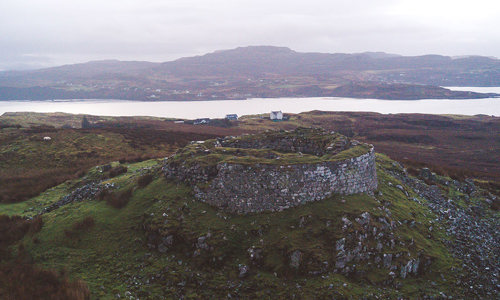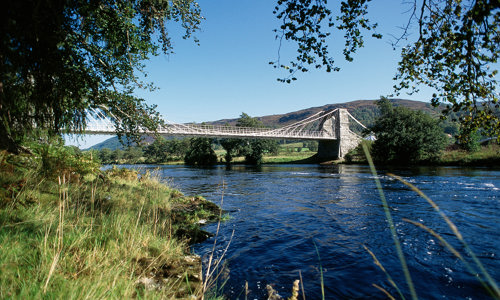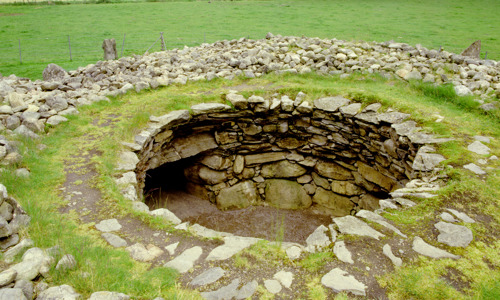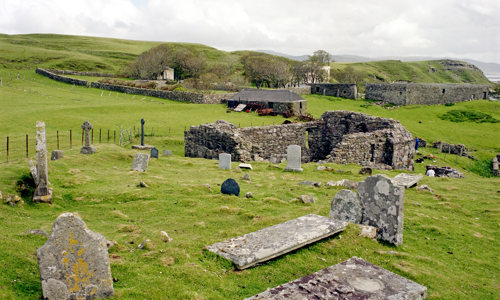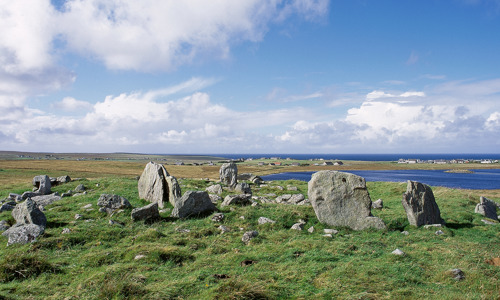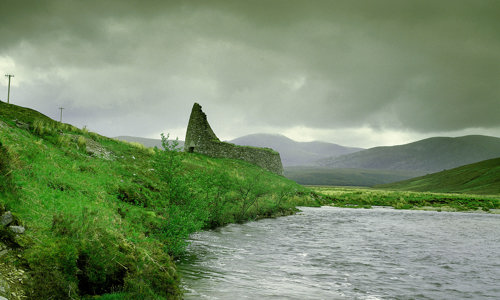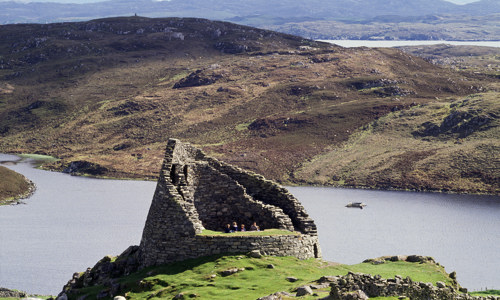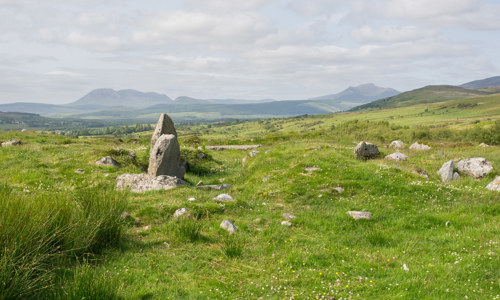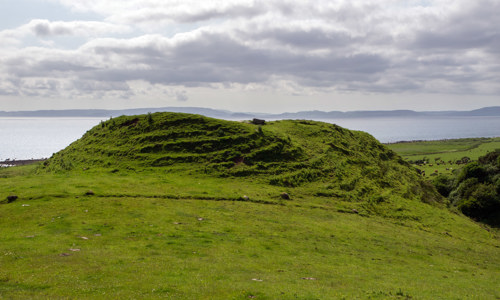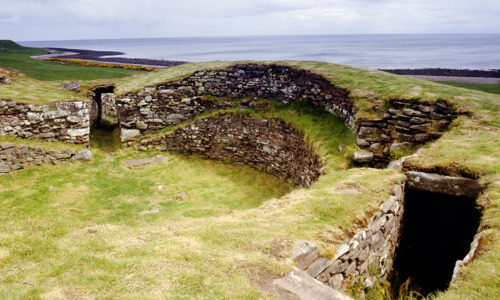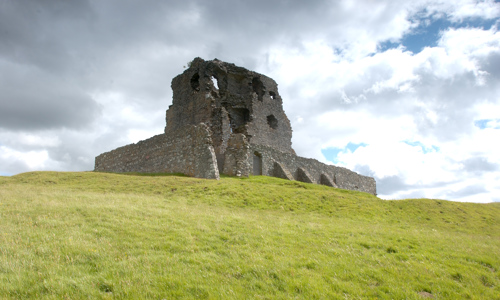History
Dun Telve and Dun Troddan were probably built between 2,000 and 2,500 years ago.
They attracted considerable interest in the 1700s and 1800s because of their remarkable preservation. In 1885 they were among the earliest monuments to be passed into State care. At the time they needed urgent action to stop them falling down, but remained in a remarkably fine state of preservation.
Dun Telve
Dun Telve is more than 20m in diameter, and part of it still stands 10m high. Its standing section reveals a cross-section of the broch’s construction. Two concentric drystone walls are tied together by large horizontal slabs, which also form the floors of narrow galleries between the inner and outer walls.
A winding stone stair leads to the top of the tower, with openings giving access to upper floors. The top floor would have been about 9m above ground level.
Dun Troddan
Dun Troddan only stands to 7.4m high, but is better preserved than Dun Telve overall.
While Dun Telve reveals valuable evidence for broch construction, Dun Troddan provides clues as to how the broch was used. The interior floor unusually has surviving evidence of a number of holes for upright posts and a hearth. Built into the hearth is a broken quern-stone which would have been used for grinding corn.
The ground floor is generally thought to have been the main living area. But the encircling wall is poorly finished at the lower level, compared to the upper levels. It may well have once held livestock, with human residents on upper floors.
Close quarters
It’s highly unusual for two Iron Age brochs to stand so close together. Only a distance of about 500m separates Dun Telve, near the river, from Dun Troddan, set on a terrace in the hillside a little further up the glen.
Uniquely Scottish
Brochs are Iron Age structures – a type of complex roundhouse found only in Scotland. There are over 500 known examples, mostly in northern and western Scotland and the islands.
Dun Telve and Dun Troddan are among just four brochs which still stand close to their original height, along with Mousa in Shetland and Dun Carloway in Lewis.


